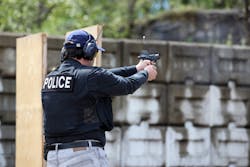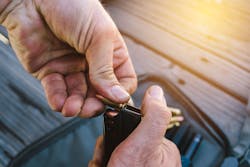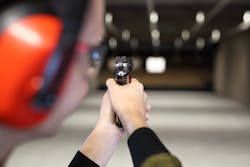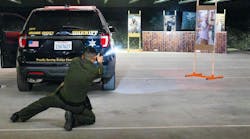For the average officer, when annual qualification day rolls around, they usually look forward to and enjoy it. It’s a day of relaxed clothing, no calls for service, shooting someone else’s (the department’s) ammo, a lunch without interruption. What’s not to like? But for the instructors who have to run the range, the day is far from relaxed. If done properly, the instructional staff is at the range at least a half-hour before the first officer shows up and is usually there for a half-hour or more after the qualifying officers have left. That extra hour (at a minimum) doesn’t take into account the hours at a desk planning shooting rotations, creating the qualification courses of fire, and more. It takes work to have a successful range day.
Depending on whether or not your agency has a dedicated range (not shared with anyone else), the range day may start with an early arrival to set up targets, make sure the classroom is squared away, and ensure the necessary armorer/weapon cleaning needs are available. The trauma kit and emergency communications need to be located, checked, and the information shared with all instructional staff. The emergency plan of action should an injury occur needs to be fully developed and understood well before the day starts. Trying to figure it out after an injury has occurred is not efficient, practical, or safe.
Once all the officers have arrived, the classroom portion of the day should get started. Administrative issues such as schedule, restroom locations, nearby food locations for lunch, etc. should all be reviewed. The emergency plan should be reviewed as to the location of the range, location of the trauma kit, and assigned duties for the instructional staff so the qualifying officers know who is doing what if anything goes sideways.
The classroom portion of the training should include the usual safety topics: eye protection, hearing protection, lead poisoning issues, and lead poisoning prevention, etc. Following that should be any necessary updates to the law, insurance mandated updates, policy changes, etc. Following that should be a review of what the courses of fire will be and any questions about shooting positions, commands, etc. need to be clarified. It is to the benefit of the qualifying officers if they can safely function on the range as close as possible to the way they do on the street. In other words, a “hot” range where weapons are only cleared during specific times. In between firing strings and position changes, the weapons should be safely holstered and reloads done as necessary instead when programmed into the qualification course.
At the lanes
When the classroom portion of the day is complete, if there are more shooters than qualification lanes available, the shooting groups need to be arranged and the first group taken out. Any questions about gear, holsters, weapons, ammunition, etc. need to be handled before the qualification courses start. If officers have personally owned secondary or off-duty weapons they wish to qualify with, in accordance with department policy, the primary firearms instructor/armorer should inspect the weapon, the ammunition to be used and the holster(s) the officer will use. It is that primary instructor’s responsibility to ensure that all three meet applicable department policies and controls.
The qualifying officers should take all the necessary ammunition for a course of fire with them to the firing line as indicated by the primary instructor. If the required amount of ammo doesn’t fit into the available magazines per officer, your officers should pocket the necessary extra and take it downrange with them or keep it in the box. Once the qualification course of fire starts, qualifying officers should not leave the range to get anything.
Some instructors believe in alibi rounds. Others do not. In contemporary practice, the large majority of instructors will tell the qualifying officers to shoot the course of fire as described and upon proper commands. If a malfunction is experienced, clear it as trained and “get back in the fight.” If the malfunction cannot be cleared and the necessary shots fired within the given time limit, then an instructor needs to check the weapon, function, and officer’s actions to determine whether or not the rounds missed should be alibied. When the course of fire is complete is one of the times that the weapons should be cleared and double-checked as “safe.” All weapons are holstered and remain that way as the targets are scored by the instructional staff. The scores are recorded and the next shooting group is rotated into position to start their qualifying round.
As was mentioned earlier, there may be secondary or off-duty weapons to be qualified with as well. All department issued duty weapons should be qualified with as the priority and secondary/off-duty weapons qualified with as time permits.
Keep it clean
When the range day is complete and all qualifications finished, the range needs to be cleaned up and all qualifying officers need to clean their weapons as well. Many agencies leave the cleaning of weapons to the officers for later at home, trusting that it will get done in a timely fashion. Some qualifying officers leave the range to go straight to a duty shift. Nearly every firearms instructor will tell you that officers are notoriously lazy about maintaining their weapons. Duty weapons should be cleaned before the qualifying officers leave the range. The range itself and the classroom should be as clean or cleaner than they were when the instructional staff showed up that morning.
Once the qualifying officers are all gone, the instructional staff should have a debrief of the day. Identify any issues of concern that need to be addressed for future qualifying courses. The qualification day is complete when the primary instructor exits the classroom and turns off the lights, taking along all qualification records and equipment.





